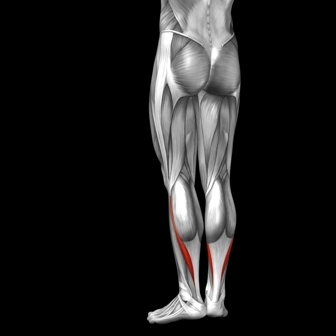Get Anatomy, Procedure Type Right for These Foot Fractures
Calcaneal, talus fractures are similar, but not identical. There are many procedures in the CPT® code book that are separated by very small degrees: sometimes, the only difference between one code and another is surgical approach, or a slight shift in anatomic location. This convention is true when it comes to coding calcaneal and talus fracture repairs. There are only a few differences between the two surgeries, yet there are at least eight codes to represent calcaneal/talus fractures. Sort it all out with this expert advice on best practices for coding these foot breaks. First, I.D. Location It is vital that you know how to differentiate calcaneal from talus fractures. Here’s a breakdown of the two injuries from Peggy Stilley, CPC, CPC-I, CPMA, CPB, COGBC, revenue integrity auditor for Oklahoma Sports Orthopedics Institute in Norman: “The calcaneus is located at the bottom of the foot and part of the heel. The talus sits above the calcaneus and at the bottom of the ankle joint. When both the talus and calcaneus are fractured it is referred to as a hindfoot fracture. “Both the talus and the calcaneus are critical to the ability to walk,” Stilley continues. “Calcaneus fractures are the most common while talus fractures are more difficult to heal due to the weak blood supply of the talus.” Then, Investigate Technique, Approach After deciding the anatomic location of the injury, you’re ready to move to other specifics of calcaneal and talus fracture coding. According to Lynn M. Anderanin, CPC, CPMA, CPPM, CPC-I, COSC, senior director of coding education at Healthcare Information Services in Park Ridge, Illinois, these surgeries can include “closed treatment, with or without manipulation, percutaneous or open treatment, and bone grafting on either kind of fracture.” Code choice: Once you’ve discovered the relevant facts, it’s time to choose a code for the calcaneal/talus fracture. You’ll choose from one of the following codes for the repairs, depending on encounter specifics: Calcaneal fractures Talus fractures Look for These Fractures on Trauma Patients You’re unlikely to see someone with a calcaneal or talus fracture that was the result of minor injury, like from stepping off the curb wrong; these fractures are typically the result of major foot and ankle injuries, experts say. “Fractures of the talus are typically the result of trauma,” Stilley explains. “High-impact falls or motor vehicle accidents are common causes. With greater impact, one typically finds greater damage.” Anderanin adds to Stilley’s description: “Patients with these type of fractures normally have had a strong force to their ankle causing the bones to break. This is common in people who land on their feet falling from a height, or impact to the foot in a car accident.” Be Careful With Combo Encounters So, how would you code an encounter in which the provider fixes both a calcaneal and talus fracture? According to the National Correct Coding Initiative (NCCI, or CCI), these two procedures are not bundled; that doesn’t always mean you should report two codes, however. Calcaneal and talus fracture repairs “do not bundle,” says Stilley. It has been Stilley’s experience, however, that “location of the calcaneal fracture can determine if both codes are billable. If the calcaneal fracture is located at the posterior portion calcaneus and separate incisions are required to treat the fractures,” you might be able to report two fracture codes, she continues. “If the calcaneal fracture is just below the talus fracture and accessed through the same incision, it could be argued these would be bundled,” says Stilley. “Following NCCI guidelines, if you are treating at least one fracture without manipulation, that would not be reported if you are treating the other also,” explains Anderanin. Best bet: Check your individual payer contracts on calcaneal and talus fracture surgeries during the same session and file the claim however the payer wants it. As you can see from the above paragraphs, the answer is not cut-and-dried. Use 57 on All Talus/Calcaneal Fx-E/M Combos The surgeon will often perform an evaluation and management (E/M) service separate from the surgery for patients with talus/calcaneal fractures. When you can prove the key elements of a significant, separately identifiable E/M service, you should be able to report it in addition to the surgery code. If you end up coding for a separate E/M service related to a talus/foot fracture repair, be sure to use modifier 57 (Decision for surgery) on the E/M code, not modifier 25 (Significant, separately identifiable evaluation and management service by the same physician or other qualified health care professional on the same day of the procedure or other service). Reason: All of the calcaneal/talus fracture surgeries addressed in this article have 90 global surgical days, which makes them major procedures and subject to modifier 57 on separate E/Ms (surgeries with global surgical days of 0 or 10 days are modifier 25 eligible.) Example: The orthopedic surgeon sees an established patient with an obvious left foot and ankle injury, but no diagnosis. After an encounter that includes a detailed history, detailed examination, and medical decision making of moderate complexity, the surgeon decides to perform closed treatment of a talus fracture with manipulation. For this encounter, you’d report:




